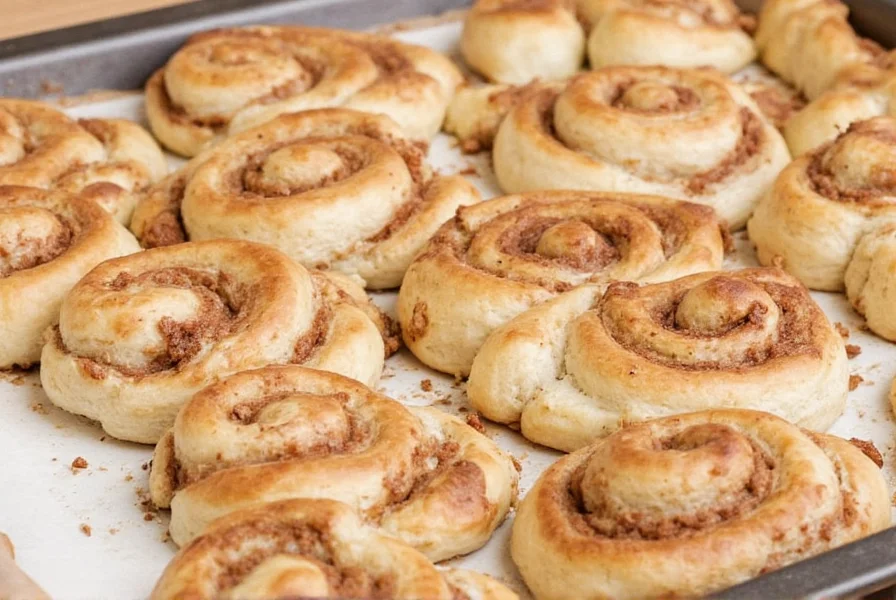When you're searching for the perfect homemade cinnamon roll recipe, the loopy whisk technique offers a game-changing approach that transforms ordinary pastries into extraordinary treats. Unlike conventional methods that simply roll the dough into a log, this specialized technique creates multiple spiral layers through a specific folding and twisting process that enhances both texture and flavor distribution.
What Makes Loopy Whisk Cinnamon Rolls Different
The "loopy whisk" isn't actually a physical tool but rather a specific hand technique named after the creator who popularized it. This method involves gently stretching and folding the dough in a particular sequence that creates additional air pockets while maintaining the integrity of the yeast structure. The result? Cinnamon rolls with remarkable height, tenderness, and that signature spiral pattern visible when sliced.
Essential Ingredients for Success
While the technique is crucial, using the right ingredients forms the foundation of perfect loopy whisk cinnamon rolls. Here's what you'll need for optimal results:
| Ingredient | Quality Recommendation | Why It Matters |
|---|---|---|
| All-purpose flour | Unbleached, preferably organic | Provides proper protein structure without excessive gluten development |
| Unsalted butter | European-style (82% fat content) | Higher fat content creates richer flavor and better layer separation |
| Active dry yeast | Fresh package with current expiration date | Ensures proper rise without off-flavors |
| Cinnamon | Ceylon variety, freshly ground | Milder, more complex flavor than cassia cinnamon |
Mastering the Loopy Whisk Technique: Step-by-Step
Follow these detailed steps to perfect the loopy whisk cinnamon roll method. This technique requires slightly more time than traditional approaches but delivers noticeably superior results.
Step 1: Prepare Your Dough Properly
Begin with a well-hydrated dough (approximately 65% hydration). The dough should feel soft and slightly sticky but still manageable. Over-flouring at this stage will prevent the distinctive loopy layers from forming properly. Allow the dough to complete its first rise at room temperature until doubled in size, typically 1.5-2 hours.
Step 2: Roll and Fill with Precision
Roll your dough into a rectangle approximately 18×12 inches, with the longer side facing you. Spread softened butter evenly across the surface, leaving a ½-inch border. Mix your cinnamon-sugar filling with a touch of cornstarch to prevent settling, then distribute evenly over the buttered surface.
Step 3: The Signature Loopy Whisk Folding
This is where the magic happens. Instead of rolling the dough tightly from one end to the other:
- Fold the top third of the rectangle down toward the center
- Fold the bottom third up, creating a layered package
- Rotate the dough 90 degrees
- Gently roll from one side to create a loose log
- Carefully twist the log into a spiral shape before cutting

Avoiding Common Technique Mistakes
Many home bakers encounter issues with the loopy whisk method due to these preventable errors:
- Over-handling the dough - Excessive manipulation destroys delicate air pockets
- Rushing the proofing stage - Proper second rise (45-60 minutes) is crucial for optimal texture
- Using cold ingredients - All components should be at room temperature for even distribution
- Cutting with a dull knife - Use dental floss or a sharp serrated knife for clean slices
Perfecting Your Baking Conditions
The oven environment significantly impacts your loopy whisk cinnamon rolls' final texture. Preheat your oven thoroughly to 350°F (175°C) and use an oven thermometer to verify accuracy. Place the rolls in the center rack and rotate the pan halfway through baking. The ideal internal temperature when done is 190°F (88°C) - any higher and you'll lose the delicate texture that makes this technique special.
Delicious Variations to Try
Once you've mastered the basic loopy whisk technique, experiment with these popular variations:
- Apple cinnamon swirl rolls - Add finely diced apples to your filling mixture
- Cheesecake-stuffed loopy rolls - Place a small dollop of cream cheese mixture in the center before rolling
- Maple-bacon version - Incorporate crumbled cooked bacon into the filling and use maple glaze
- Overnight refrigerated method - Prepare rolls, then refrigerate overnight for morning baking
Storage and Reheating for Maximum Freshness
While loopy whisk cinnamon rolls taste best fresh from the oven, proper storage maintains quality:
- Store at room temperature for up to 24 hours in an airtight container with parchment between layers
- For longer storage, freeze individual rolls on a baking sheet, then transfer to freezer bags
- Reheat frozen rolls by placing directly in a 300°F oven for 12-15 minutes
- Never microwave whole cinnamon rolls - this destroys the delicate layered texture










 浙公网安备
33010002000092号
浙公网安备
33010002000092号 浙B2-20120091-4
浙B2-20120091-4